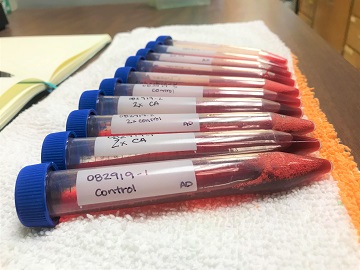621121-setting a baseline.jpg

Red drum blood samples ready for testing. Credit: Dr. Angelina Dichiera, University of Texas Marine Science Institute
Doctors sometimes run tests even when they know you’re just fine. The tests tell them how your body works when it is fine, making it easier to figure out what’s wrong when you’re sick.
Marine biologists sometimes do the same thing with fish. They run tests to see how the fish operate under current environmental conditions. That can help them figure out how the fish are faring in the future under different conditions.
An example is some work done by scientists at the University of Texas Marine Science Institute. They studied the role of an enzyme in the blood that affects how a fish “breathes in the good air and breathes out the bad.”
The enzyme is carbonic anhydrase. It was already known to help fish get rid of carbon dioxide in the blood. But some fish have a lot more of the enzyme than they need to take care of CO2.
So the researchers checked whether carbonic anhydrase also effects how oxygen is transported in the blood. In the lab, they tested the blood of red drum, a popular sportfish in the Gulf of Mexico. When they cut the amount of the enzyme by half, the amount of oxygen passed from the blood to the tissues also was cut in half. And when they doubled the amount, the rate of oxygen delivery doubled as well.
The researchers say that keeping an eye on the enzyme in fish in the wild could be one way to monitor their health -- and how they’re adapting to the changing oceans.

